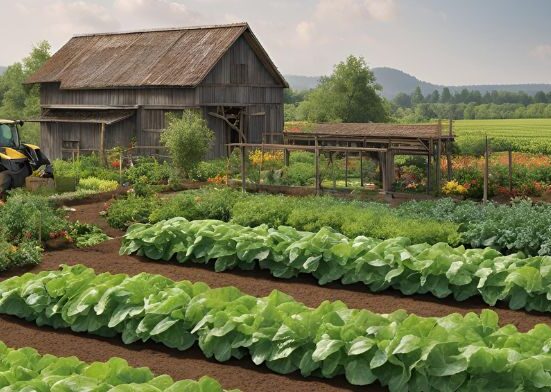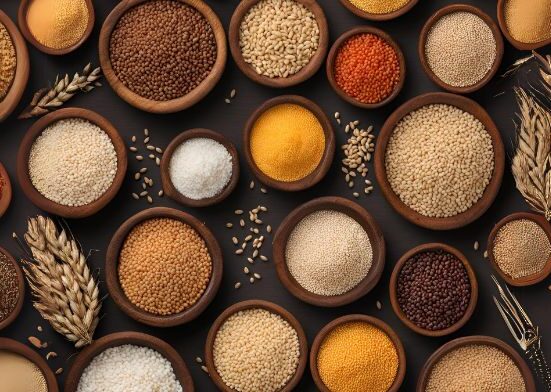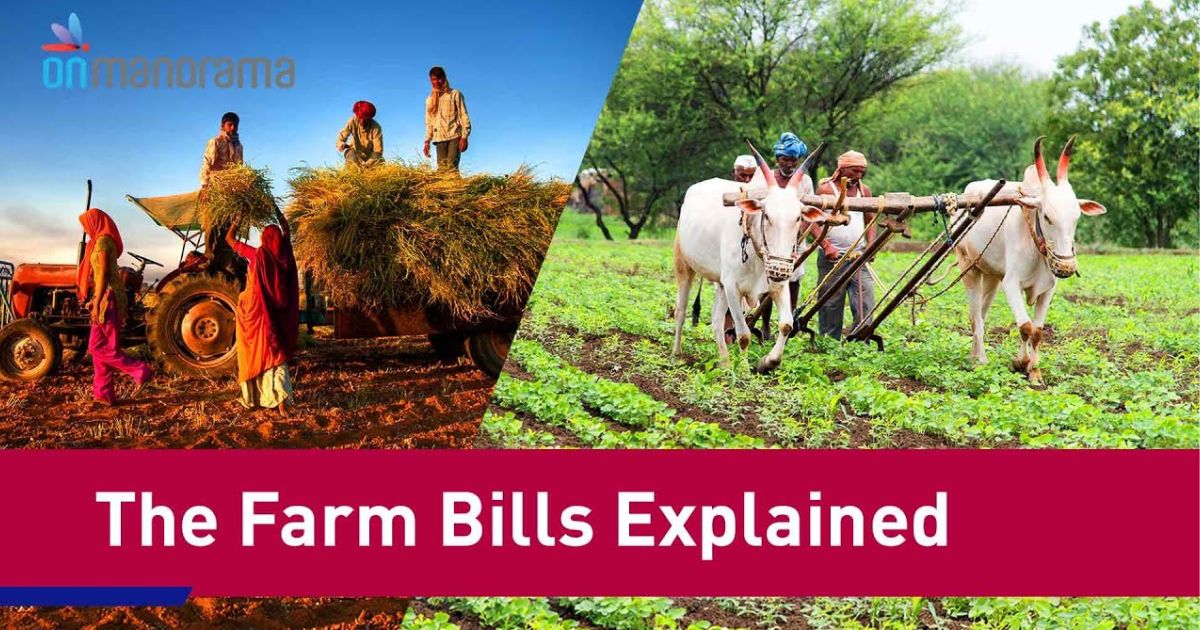The Farm Bill is one of the most significant pieces of legislation in the United States, shaping the future of agriculture, food production, nutrition programs, and rural development. Passed roughly every five years, this comprehensive law impacts farmers, consumers, the environment, and the economy.The upcoming 2025 Farm Bill is drawing a lot of attention as policymakers, farmers, environmental groups, and consumers debate its priorities and funding. From crop insurance and subsidies to SNAP benefits, climate-friendly farming initiatives, and sustainable agriculture policies, the Farm Bill affects almost every aspect of the food system.
In this blog, we’ll break down what theunited states farm bill is, its key components, significant changes in the 2025 version, and how it influences farmers, consumers, and the environment. Whether you’re a farmer, policymaker, or simply curious about how your food system works, this guide will help you understand everything you need to know.
What Is the Farm Bill?
The farm bills is a comprehensive federal legislation in the United States that governs a wide range of agricultural and food-related programs. It is typically renewed every five years and has a significant impact on farmers, consumers, rural communities, and even international trade.
Initially introduced in 1933 as part of President Franklin D. Roosevelt’s New Deal, the farmer bi was designed to stabilize crop prices, support struggling farmers, and ensure a steady food supply during the Great Depression. Over the decades, its scope has expanded far beyond farming, now covering areas like:
- Crop insurance and subsidies – Providing financial protection to farmers against losses.
- Nutrition assistance programs – Funding programs like SNAP (Supplemental Nutrition Assistance Program) that help low-income families afford food.
- Conservation and environmental protection – Supporting sustainable farming and natural resource preservation.
- Rural development – Funding infrastructure, broadband access, and economic growth in rural communities.
- Agricultural research and innovation – Investing in new technologies and sustainable farming practices.
The Farm Bill is unique because it combines agriculture policy with nutrition, environment, and economy, making it one of the most influential laws affecting how food is grown, Hybrid Farming: The Future of Sustainable Agriculture distributed, and consumed in the U.S.With each renewal, lawmakers adjust priorities based on economic trends, climate challenges, consumer demands, and technological advancements. It is anticipated that the 2025 us farm bill will bring substantial updates, especially around climate-smart agriculture, food security, and rural development.
Significant Changes in the 2025 Farm Bill
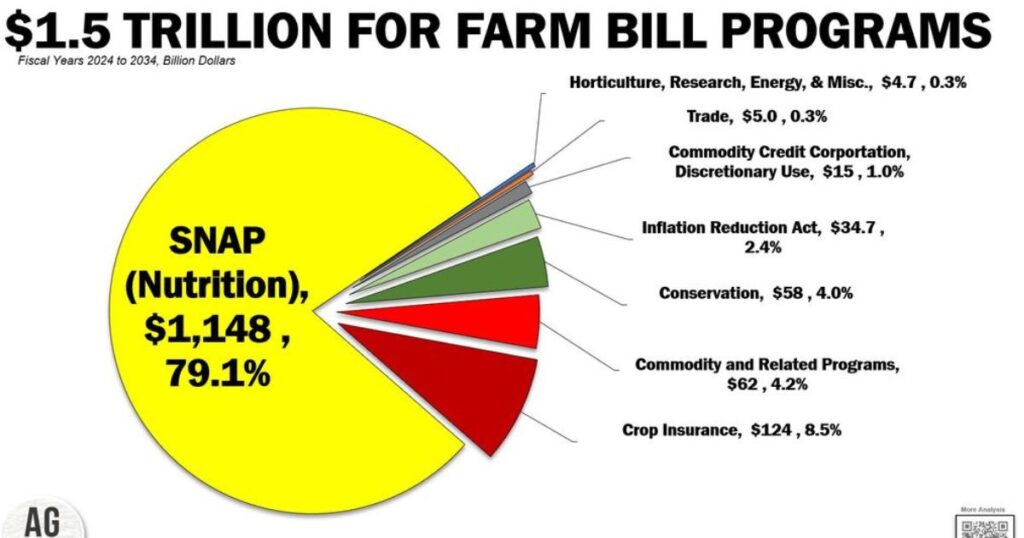
Enhanced Price Support for Farmers
- Higher reference prices for key commodities, with increases ranging from roughly 10% to 21%. For instance, wheat, corn, rice, and soybeans all saw significant boosts.
- Automatic payment of the higher of ARC-CO or PLC for the 2025 crop year, eliminating the need for farmers to make a choice.
- ARC-CO coverage increase to guarantee 90% of benchmark revenue (up from 86%), with a higher maximum payment cap of 12% (up from 10%).
Expanded Base Acres and Program Extensions
- New base acres eligibility for up to 30 million acres nationwide, benefiting farms that historically produced covered commodities but lacked base acreage.
- Extension of key programs, PLC, ARC, Dairy Margin Coverage (DMC), marketing loans, and DMC through 2031, offering consistent farm support.
Stronger Dairy and Loan Support
- Expanded DMC coverage tier, raising eligibility from 5 million pounds to 6 million pounds, and introducing a 25% premium discount for multi-year commitments.
- Marketing assistance loan improvements: updated rates, resumed cotton storage payments, flexible repayments, and refund support for upland cotton producers.
Increased Payment Limits & Fair Treatment of Entities
- The commodity payment cap has been raised from $125,000 to $155,000, with inflation adjustments going forward.
- “Qualified pass-through entities” (e.g., LLCs, S corporations) are now eligible for equitable treatment under payment limits, aligning them with general partnerships.
- Tax reforms to loosen income limitations: those earning over 75% of income from farming and related activities are now exempt from the $900,000 AGI cap.
Boosted Support for Beginning Farmers & Crop Insurance
- Enhanced premium subsidies: Beginning farmers and ranchers receive an additional 15% support for the first two years, decreasing gradually to 10% by years five through ten.
- Expanded coverage options: WFRP max coverage now 90%; SCO and ECO subsidies raised to 80%; and SCO is accessible even if a farmer chooses ARC.
Disaster Relief & Livestock Protections
- Livestock indemnity payment enhancements: losses from predation are now covered at 100% of market value; unborn livestock losses are also eligible (up to 85% of value), and beginning farmers see extended support.
Expanded Funding for Research, Speciality Crops & Conservation
- Increased annual funding for Plant Pest and Disease Management ($75M to $90M), Speciality Crop Block Grants ($85M to $100M), bioenergy and organic initiatives.
- New authorizations for urban agriculture, technology innovation, farmer support programs, animal disease prevention & vaccine research, and emergency food bank projects.
Reconciliation Bill Controversies
- Loophole expansion for pass-through entities gives them broader access to subsidy payments, raising fairness concerns for rural communities.
- Rescinded IRA conservation funds: Cancelled unobligated funds for several conservation programs, shifting priorities in agriculture.
- Increased spending overall: Additional $54B in price support, $6.3B to crop insurance, and $2.9B to disaster relief over 10 years.
TL;DR Snapshot:
The 2025 Farm Bill brings bigger safety nets, better equity, and more flexibility, particularly supporting farmers through higher price guarantees, streamlined insurance, and clearer payment pathways. However, it also raises pivotal debates on fairness and conservation funding.
How the Farm Bill Impacts Farmers
The farm bill is an essential component of shaping the lives and livelihoods of farmers across the United States. By setting policies and funding for agriculture, rural development, and nutrition programs, it provides both financial support and long-term security to those who feed the nation. The 2025 Farm Bill brings several significant updates that directly impact farmers, from stronger safety nets to new opportunities for growth and sustainability.
Improved Financial Security
One of the most direct ways the Farm Bill supports farmers is through enhanced price guarantees and income protection programs:
- Higher reference prices for major crops like corn, soybeans, wheat, rice, and cotton provide better price stability.
- Automatic ARC-CO or PLC payments for 2025 simplify choices and ensure farmers get the most beneficial program automatically.
- Expanded marketing assistance loans offer flexible Tomato Cage Guide: Support For Stronger Plants repayment options and higher loan rates to help manage cash flow during low-price periods.
Expanded Crop Insurance and Disaster Assistance
Farming comes with unpredictable risks like extreme weather, pests, and market volatility. The 2025 Farm Bill strengthens farmers’ safety nets:
- Higher premium subsidies for crop insurance, especially for beginning farmers (up to 15% in early years).
- Increased subsidies for programs like SCO (Supplemental Coverage Option) and ECO (Enhanced Coverage Option), making insurance more affordable.
- Enhanced livestock indemnity programs now cover 100% of predation losses and include compensation for unborn livestock.
- More funding for disaster relief is crucial, as the us farm bill ensures farmers recover faster from natural calamities like floods, droughts, and hurricanes.
Greater Opportunities for Beginning and Small Farmers
The 2025 Farm Bill introduces targeted programs to make farming more accessible for new, small, and underserved farmers:
- Additional base acres made available for farms without historical program coverage.
- Higher cost-sharing for conservation and rural development projects.
- Specialized grants, training, and loans are provided to minority, veteran, and beginning farmers to encourage new entrants into agriculture.
Support for Sustainable and Climate-Smart Farming
As climate change continues to challenge agriculture, the 2025 Farm Bill prioritizes sustainability and innovation:
- Incentives are available for adopting climate-smart practices, such as cover cropping, reduced tillage, and regenerative farming.
- Increased funding for conservation programs that protect soil health, water quality, and biodiversity.
- Investment in research and innovation to develop drought-resistant crops and sustainable farming technologies.
Access to Rural Development and Infrastructure Funding
The Farm Bill also impacts farmers beyond the field by improving rural communities:
- Funding for broadband expansion helps farmers access digital tools, e-commerce platforms, and precision agriculture technologies.
- Grants for rural infrastructure support better roads, water systems, and energy access, making farm operations more efficient.
- Strengthened programs for renewable energy projects, such as solar-powered irrigation and on-farm bioenergy production.
Easier Loan Access and Higher Payment Limits
The 2025 farm bill usa raises commodity payment limits from $125,000 to $155,000, adjusted annually for inflation.
- This helps farmers invest in equipment, expand operations, and manage debt more effectively.
- Qualified pass-through entities like LLCs and S corporations now receive fairer treatment, giving farmers more flexibility in business structuring.
- Looser income restrictions benefit those who earn more than 75% of their income from farming, What Is an Orchard ensuring greater eligibility for federal support.
More Support for Speciality Crops and Diversification
While commodity crops dominate farm programs, the 2025 Farm Bill also allocates increased funding for:
- Speciality crop block grants to support fruit, vegetable, and nut growers.
- Organic farming initiatives and certifications help small farmers tap into premium markets.
- Research into pest and disease management for high-value crops.
Effects on Consumers and Food Prices
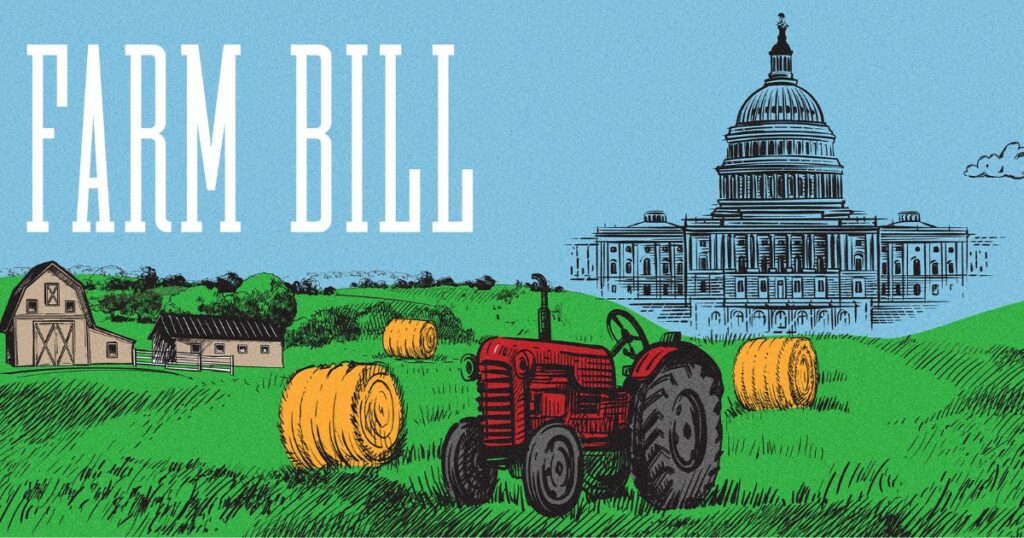
The Farm Bill affects not only farmers but also directly impacts consumers, food prices, and nutrition programs across the United States. While its primary purpose is to support agriculture and rural development, many of its policies shape what ends up on your plate, how much it costs, and who has access to affordable, nutritious food. The 2025 Farm Bill summarises the updates that consumers should pay attention to.
Influence on Grocery Prices
The Farm Bill is essential for maintaining food prices by supporting farmers and ensuring a steady food supply:
- Higher reference prices for key crops like wheat, corn, rice, and soybeans mean farmers earn more, but these costs can trickle down to consumers in the form of slightly higher prices.
- Increased funding for crop insurance and disaster relief helps farmers recover faster after natural disasters, preventing sudden price spikes caused by shortages.
- Support for diverse and local food systems may encourage competitive pricing and keep some food costs stable.
SNAP and Nutrition Assistance Programs
A large portion of the farmbill stabilization goes toward nutrition programs, notably the Supplemental Nutrition Assistance Program (SNAP), which directly impacts millions of households:
- The 2025 Farm Bill maintains full federal funding for SNAP, ensuring continued access to healthy food for low-income families.
- While some debates focused on shifting food aid costs to states, Best Tractor Brands for Farmers: Top Choices for Power Performance and the final bill kept SNAP funding centralized, protecting vulnerable communities.
- Expanded funding for fresh produce initiatives and farmers’ market incentives aims to make healthy food more affordable for SNAP recipients.
Better Access to Healthy Food
The 2025 Farm Bill introduces several programs to improve food access and affordability:
- Farmers’ market promotion programs make it easier for local producers to connect directly with consumers.
- Nutrition incentive programs increase purchasing power for fruits, vegetables, and other healthy options, especially in underserved communities.
- Urban agriculture grants support local food production in centralized cities, helping reduce dependency on long-distance supply chains and lowering costs in some areas.
Food Security and Emergency Assistance
The bill strengthens policies designed to prevent hunger and food insecurity:
- Emergency food assistance programs receive more funding, ensuring food banks and community organizations can serve those in need.
- Investment in food storage, distribution, and transportation infrastructure helps stabilize food supplies and keeps prices steady during disruptions.
- Expanded research and development aims to make the food system more resilient against climate-related risks, reducing volatility in both supply and prices.
Impact on Speciality and Organic Foods
For consumers seeking healthier, organic, or locally grown options, the 2025 Farm Bill expands speciality crop funding:
- Increased grants for organic farming certification and pest management research make organic produce more sustainable.
- More support for speciality crop production, like fruits, vegetables, and nuts, may lead to lower prices for consumers.
Climate-Smart Farming and Consumer Benefits
As the Farm Bill invests more in climate-smart agriculture, consumers benefit indirectly:
- Sustainable farming practices improve long-term food security by protecting soil health and water resources.
- Investment in renewable energy and resource-efficient systems may stabilize production costs, reducing future price volatility.
Bottom Line
The 2025 Farm Bill influences consumers in two key ways:
- Food Prices – By stabilizing farm bill presentation income and supporting food production, the bill helps prevent sudden spikes while promoting competitive pricing.
- Nutrition Access – Through SNAP, speciality crop grants, and healthy food incentives, it ensures millions of Americans can access affordable, nutritious food.
For households, this means more reliable food availability, improved access to fresh produce, and slightly more stable grocery prices despite changing global markets and challenges.
Environmental and Climate Provisions in the 2025 Farm Bill
The 2025 Farm Bill places a stronger emphasis on sustainability, environmental protection, and climate-smart agriculture than ever before. Acknowledging the increasing effects of climate change on the United States. Agriculture policymakers have introduced a range of programs aimed at conservation, renewable energy, and resilient farming practices. These provisions not only help farmers adapt to changing conditions but also protect natural resources for future generations.
Increased Funding for Conservation Programs
The federal farm bill expands several major conservation initiatives to encourage farmers and ranchers to adopt sustainable practices:
- Conservation Stewardship Program (CSP) – Provides additional funding to farmers who adopt soil health management and crop rotation conservation practices.
- Environmental Quality Incentives Program (EQIP) – Provides greater financial assistance for projects such as precision irrigation, reduced tillage, and habitat protection.
- Regional Conservation Partnership Program (RCPP) – Promotes collaborative efforts between farmers, local governments, and nonprofits to tackle regional environmental challenges.
- Wetlands and Grasslands Protection – Expanded support for restoring degraded ecosystems to improve biodiversity and water quality.
Climate-Smart Agriculture Initiatives
The 2025 Farm Bill accelerates the shift toward climate-friendly farming by funding projects that reduce greenhouse gas emissions and improve carbon sequestration:
- Incentives for adopting cover crops, no-till agriculture, and crop diversification to enhance soil health.
- Grants are available for integrating carbon farming techniques, which help farmers earn additional income from carbon credits.
- Funding for climate-smart pilot projects that test innovative technologies, such as AI-driven precision agriculture and regenerative practices.
Renewable Energy and Rural Sustainability
Energy efficiency and clean energy production receive a significant boost under the 2025 Farm Bill:
- Expanded support for the Rural Energy for America Program (REAP), helping farmers and rural businesses invest in solar, wind, and bioenergy projects.
- Tax credits and grants for installing renewable-powered irrigation systems, grain dryers, and cold storage facilities.
- A greater focus on reducing fossil fuel dependency in agriculture can help lower long-term operational costs for farmers.
Protection of Water Resources
The 2025 Farm Bill introduces new measures to safeguard water quality and availability:
- Financial incentives for adopting precision irrigation systems that reduce water waste.
- Programs to prevent nutrient runoff into rivers and lakes protect aquatic ecosystems.
- Expanded watershed restoration projects to improve drought resilience and minimize flood risks.
Support for Research and Innovation
To address the dual issues of food security and climate change, the bill invests heavily in scientific research and technology:
- Funding for drought-resistant crop development to secure yields in extreme weather.
- Support for data-driven farming tools and AI-powered monitoring systems that optimize resource use.
- Research into alternative farming systems, such as vertical farming and aquaponics, to reduce environmental footprints.
Promoting Sustainable Livestock Management
Livestock operations also receive guidance and incentives for reducing and improving animal welfare:
- Grants for developing methane-reducing feed additives and waste management solutions.
- Support for transitioning to rotational grazing systems that restore grasslands and improve soil health.
- Pilot programs are exploring the integration of renewable energy into large-scale livestock facilities.
Balancing Conservation and Production Needs
While the bill emphasizes environmental stewardship, it also seeks to maintain farm profitability:
- Voluntary participation ensures farmers adopt climate-smart practices without being overburdened by regulation.
- Financial incentives and technical assistance make sustainable farming economically viable.
- Collaborative programs encourage farmers, researchers, and policymakers to co-develop solutions tailored to local ecosystems.
Bottom Line
The 2025 Farm Bill positions climate resilience and sustainability at the forefront of U.S. agriculture policy. By funding conservation programs, renewable energy, climate-smart practices, and cutting-edge research, it empowers farmers to:
- Protect natural resources
- Reduce emissions
- Build long-term resilience against extreme weather.
- Ensure a sustainable and secure food supply.
For consumers, these provisions promise a healthier environment, safer food systems, and a more sustainable agricultural future.
Controversies and Debates Around the 2025 Farm Bill
The 2025 Farm Bill has been hailed as a comprehensive package that strengthens farm safety nets, expands conservation efforts, and supports food security. However, it has also sparked heated debates among lawmakers, farmers, environmentalists, and advocacy groups. The discussions revolve around funding priorities, climate policies, subsidy fairness, and the balance between agriculture and nutrition programs. Here’s a breakdown of the significant controversies:
Funding Priorities and Budget Allocation
One of the most significant points of contention is where the money goes:
- Higher reference prices for major crops have increased federal spending by billions of dollars, which critics argue disproportionately benefits large agribusinesses rather than small farmers.
- Nutrition programs like SNAP consume a significant portion of the Farm Bill budget, leading some lawmakers to call for spending cuts—a proposal strongly opposed by food security advocates.
- Climate-related programs received expanded funding, sparking concerns from some policymakers who believe these initiatives divert resources from core farm support programs.
SNAP Program and Food Aid Disputes
The Supplemental Nutrition Assistance Program (SNAP) has long been one of the most divisive elements of the Farm Bill:
- Some lawmakers pushed for state-level cost-sharing, which would shift part of the SNAP funding burden from the federal government to the states.
- Critics argued that such measures could reduce benefits and leave millions of low-income families vulnerable.
- Ultimately, federal control over SNAP funding remained intact in the final bill, but the debate highlighted deep divisions over how much the government should invest in food assistance.
Climate-Smart Agriculture Funding
The 2025 Farm Bill invests heavily in climate-smart farming initiatives, including grants, conservation programs, and renewable energy incentives:
- Supporters argue these investments are essential for sustainability, helping farmers adapt to extreme weather and reduce greenhouse gas emissions.
- Opponents, however, believe climate provisions go too far, accusing the bill of favouring environmental agendas over immediate farm profitability.
- Some environmental groups, on the other hand, claim the bill doesn’t go far enough, criticizing limited enforcement mechanisms for climate-related goals.
Payment Limits and Agribusiness Advantages
The 2025 Farm Bill raises the commodity payment cap from $125,000 to $155,000, adjusted for inflation:
- Proponents argue that higher caps reflect rising production costs and are necessary to keep farmers competitive.
- Critics say the change favours large-scale farming operations while doing little to support small and beginning farmers.
- Additionally, expanding eligibility for pass-through entities like LLCs and S corporations has raised concerns about wealthy landowners benefiting disproportionately from subsidies.
Rescinded Conservation Funds
A particularly controversial move was the rescission of unused Inflation Reduction Act (IRA) funds allocated initially for conservation programs:
- Supporters say reallocating these funds makes the Farm Bill more efficient and fiscally responsible.
- Environmental advocates argue that cutting these funds undermines long-term sustainability goals and slows progress on climate adaptation.
Support for Speciality Crops vs. Commodity Crops
While the bill increases funding for speciality crops, organic certification, and local food systems, critics point out that commodity crops still receive the lion’s share of subsidies:
- Small fruit and vegetable growers argue they remain underfunded compared to large-scale grain producers.
- Consumer advocates believe this imbalance distorts food markets and keeps healthy foods more expensive.
Rising Overall Spending
The 2025 Farm Bill introduces tens of billions of dollars in new spending over the next decade:
- Supporters justify the increase as necessary to protect farmers and food systems against global challenges like climate change, supply chain disruptions, and rising input costs.
- Critics, especially fiscal conservatives, Understanding Food Costs and Modern Farming Practices warn that ballooning costs could worsen the federal deficit and place future taxpayers under greater financial strain.
Political Polarisation: Polarisation and Regional Divides
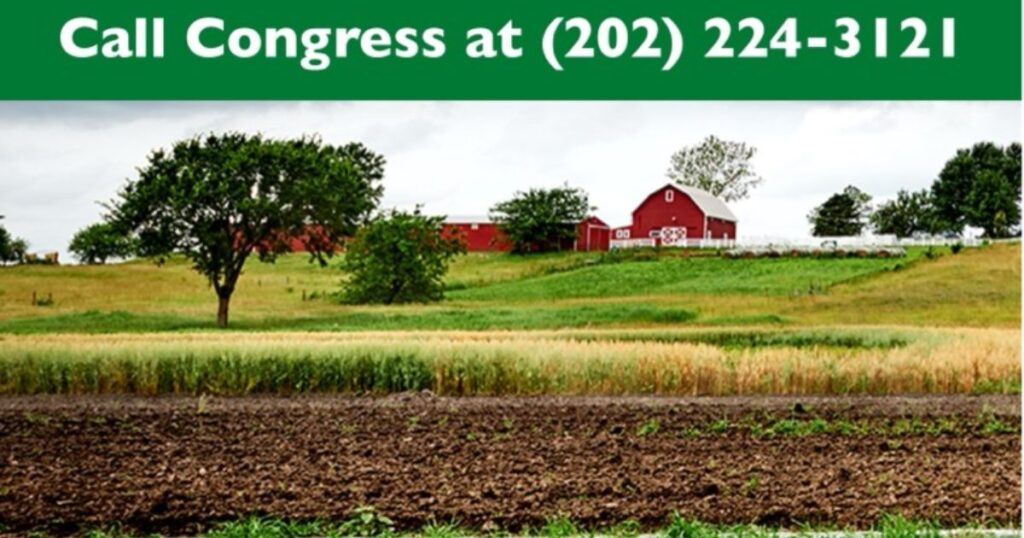
Beyond policy details, the Farm Bill debate reflects broader political and regional divides:
- Rural vs. urban priorities: Lawmakers from rural areas often push for more substantial farm subsidies, while urban representatives emphasize nutrition and food security programs.
- Red vs. blue states: Climate funding, conservation priorities, and SNAP allocations continue to split Congress along party lines.
Bottom Line
The 2025 Farm Bill tries to balance farm income support, nutrition programs, conservation goals, and climate action. While it introduces major reforms and expanded funding, polarisations remain unresolved:
- Small vs. large farms: Who benefits most from subsidies?
- Environmental goals vs. economic realities: How much should taxpayers fund climate-smart farming?
- Nutrition vs. agriculture spending: Should SNAP and farm support be tied together?
These debates are likely to resurface in future revisions, making the Farm Bill a continuously evolving battleground for agriculture, food security, and climate policy.
Conclusion
The 2025 Farm Bill is a landmark piece of legislation that touches nearly every aspect of American agriculture, food security, and rural development. From providing financial stability for farmers to supporting nutrition programs like SNAP, investing in climate-smart agriculture, and promoting sustainable farming practices, the bill has far-reaching consequences for both producers and consumers.
- Key takeaways include summarising safety nets for farmers through higher crop insurance subsidies, improved disaster relief, and increased commodity payment limits.
- Expanded support for beginning farmers, speciality crops, and organic farming, encouraging innovation and diversification in U.S. agriculture.
- Environmental and climate provisions that promote soil health, water conservation, renewable energy, and sustainable livestock management.
- Impacts on consumers through stabilized food prices, improved access to healthy foods, and continued funding for nutrition assistance programs.
- Ongoing debates and controversies surround issues such as fairness, budget priorities, and the balance between environmental goals and immediate farm profitability.
The 2025 Farm Bill reflects a careful balancing act supporting farmers, protecting the environment, and ensuring access to nutritious food while navigating political, economic, and social complexities. Staying informed about these policies is essential for anyone connected to the food system, whether as a farmer, producer or consumer.The Farm Bill demonstrates that agriculture policy is not just about crops but about people, communities, and the future of our food system.
FAQ
What is the purpose of the Farm Bill?
The Farm Bill is a federal law designed to support farmers, stabilize crop prices, fund nutrition programs like SNAP, promote sustainable agriculture, and develop rural communities, balancing economic, environmental, and social priorities.
How often is the Farm Bill updated?
Usually, the Farm Bill is extended every five years. Each version reflects current agricultural trends, economic conditions, climate challenges, and policy priorities, allowing lawmakers to adjust subsidies, conservation programs, nutrition assistance, and rural development initiatives.
How does the 2025 Farm Bill affect food prices?
By providing crop insurance, subsidies, and disaster assistance, the 2025 Farm Bill helps stabilize farm income and supply, which can prevent drastic spikes in grocery prices. It also funds SNAP and programs promoting access to affordable, healthy foods.
Who benefits the most from the 2025 Farm Bill?
Farmers, especially those growing major commodities, beginning farmers, speciality crop producers, and rural communities, benefit. Consumers also gain through nutrition programs, access to fresh produce, and more stable food prices, while environmental programs support long-term sustainability.
What are the main environmental provisions in the 2025 Farm Bill?
The bill promotes soil health, stabilizes conservation, supports climate-smart agriculture, promotes renewable energy, and encourages sustainable livestock practices. Programs like EQIP, CSP, and RCPP provide incentives for farmers to increase climate change resistance and implement eco-friendly farming methods.




